Ruberoid - time-tested, inexpensive coating. We will tell how to choose and put it right.
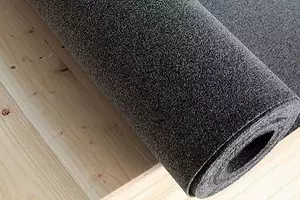
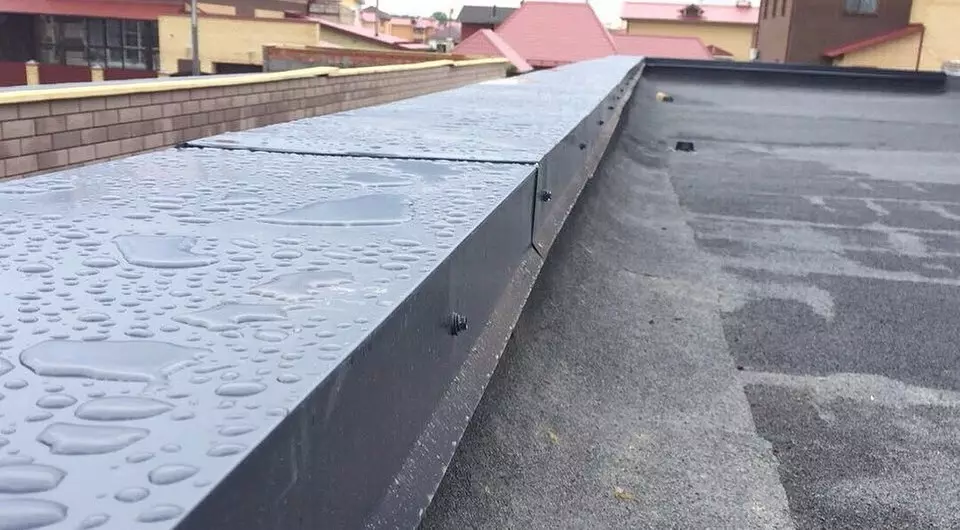
The soft roof is considered the best choice for coating flat concrete roofs. It is good for rods, provided that the material is selected and stuck correctly. We will analyze in detail, look at the video, how do it yourself cover the roof of the rubberoid. With it, you can equip the roof of the house, shed, utility rooms, garage.
All about roof cover Ruberoid
What it isFeatures of choice
Calculation of the number of rolls
Montaja technology
- Preparation
- Laying
What is Ruberoid
The material is called roofing cardboard. This is a very accurate name, because its base pressed paper, in some varieties it replaces the fiberglass. It is impregnated with bitumen, on top of which another bitumen layer is superimposed. And the latter is placed protective sprinkle. This is a stone crumb of various fractions. It enhances the coating, increases its strength. There are other advantages.
- Resistance to atmospheric influences and temperature drops.
- The service life is 10-15 years old.
- Easy to maintain.
- Resistance to ultraviolet.
- Low price.
The soft roof is well absorbed the noise. Rain knocking, as it would, for example, with a straightener, not disturb the tenants. Weak place is a cardboard basis. If the protection is damaged, the moisture is unhindered to the paper. It wets and destroys.
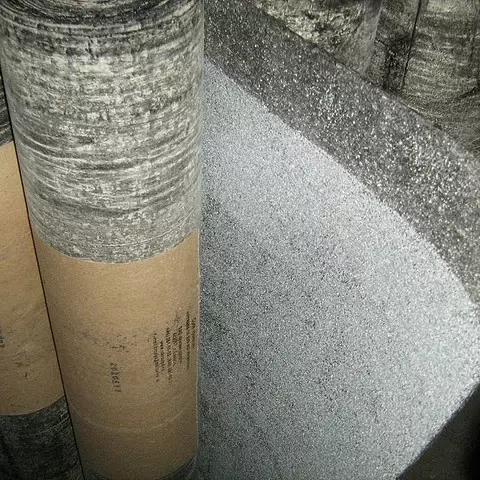
Installing the web at minus temperatures is impossible. It becomes fragile, can break. After installation, this property disappears. The soft roof does not respond to temperature differences. Maybe a little melted on a strong heat.
What roof roof is better to choose
There are many varieties of material. Each of them is intended for certain works. The coverage information will be recognized from the labeling. It consists of letters and numbers located in such a sequence.
- Designation of the class of the canvas, in this case Ruberoid.
- Purpose. Maybe p (lining) or to (roofing).
- Type of sprinkle. Variants M (fine-grained), PP (dust-shaped), K (coarse-grained), h (scaly). If the sprinkle is colored, the letter C. will appear
- Basic density. Three-digit number from 200 to 420 g / sq. m.
- The latter in the marking can be the letter E. It is so denoted by the super elastic canvas, which is used for laying on the surface of the roof of a complex shape.
Soft roofing canvases mounted on the basis of several layers. The first is considered to be underlying. For it, they choose the brand of RPP, that is, with a two-sided dust-like mound. For the upper layers, material with coarse-grained crumbs or scales that perform a protective function are designed. Rolls with fine-grained sprinkle are recommended to be treated from above only under the condition of additional protection. With such a variety, it can be difficult to make a choice which runner is better for the roof of the garage, for example.
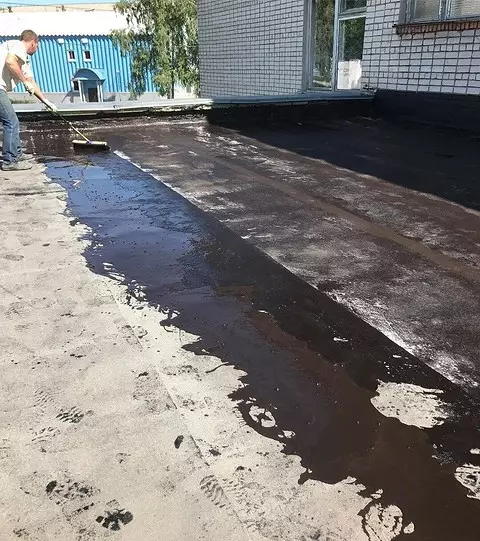
In order not to be mistaken, it should be clearly defined for what type of roof the material is selected, how many layers it will be laid, how it is easier to install. Based on this, the density, type of sprinkle, presence or absence of an adhesive layer is selected.
Calculation of the number of material
If you plan to spend all the work with your own hands, you need to start with the calculations. First, it is determined how much the layers of the canvas need. To do this, know the roof type: flat it is either scope. In the latter case you need to know the angle of inclination of the plane. What he is less, the more layers will have to be laid so that the soft roof does not flow. For a general calculation, such a scheme is accepted:
- The slope with a bias in 35-45 ° is covered with two layers.
- The scope plane of 15-30 ° is covered with three layers.
- Flat and low-charts are covered with 4-5 layers.
These are general calculations. It is necessary to know that experienced wizards do not advise on the roof with a slope of more than 15 ° only runner. They advise it to apply it in such cases as a lining for Mellochochorpitsa, Ondulin or Profile. The coating consumption is calculated after the number of layers is determined. To do this, calculate the scope area, then they are divided into an area, which can be covered with one roll.
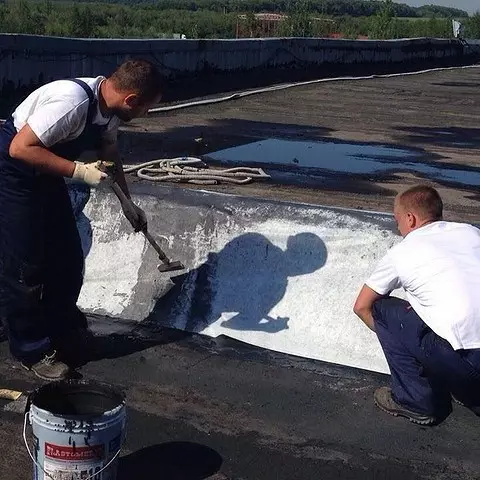
It must be borne in mind that the strips are put with the allen in 150-200 mm. Another important point - for the lower and upper layers you need to buy different material. The amount of each type is calculated.
How do it yourself cover the roof of the rubberoid
3 ways of laying
- Down up. The roll is stacked on the lower edge of the skate and rolls down towards the skate. If the strip is long enough, it is driving through the horse, continues to lay the styling to the other edge of the skate. The first formation should be deposited from the frontmostone located with the leeward part. It is necessarily formed ingestion.
- Across. The strips are unfolded in the transverse direction relative to the scope plane. The laying of the panels begin to be left below, leave from the bottom edge of 200-300 mm for further ripples. The horse is overlapped so that the fold should be on the center of the canvas.
- Combined. The alternation of the methods described above. This turns out a durable wear-resistant roofing carpet.
3 edges processing methods
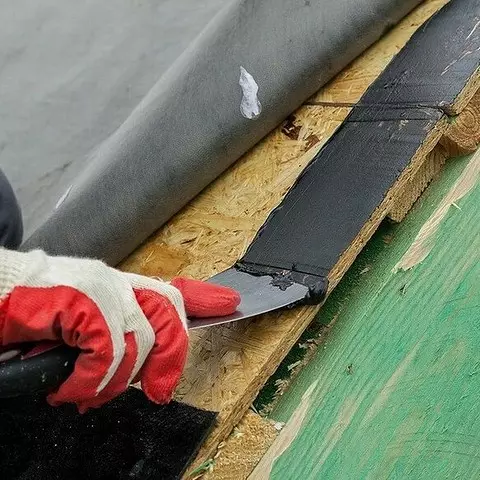
Also an important point is the method of processing edges. If they do nothing with them, the moisture will fall under the cloth, which will lead to its destruction. They need to be subject to, in this form to secure.
You can use three ways:
- Fixing edges with metal stripes. Not the best choice, because with time the metal can corrode.
- Fastening with wooden bars or slats. Before mounting, the details of the tree are impregnated with antiseptics and antipirens.
- Glit edges of bituminous paste. Simple, reliable method.
Installation technology may differ slightly. It depends on the type of material. We will analyze the two possible options in stages.
Preparatory work
The basis for rubberoid roof should be smooth and durable. If this is not a concrete slab, which is considered to be the best overlap in such cases, a solid doome is placed.
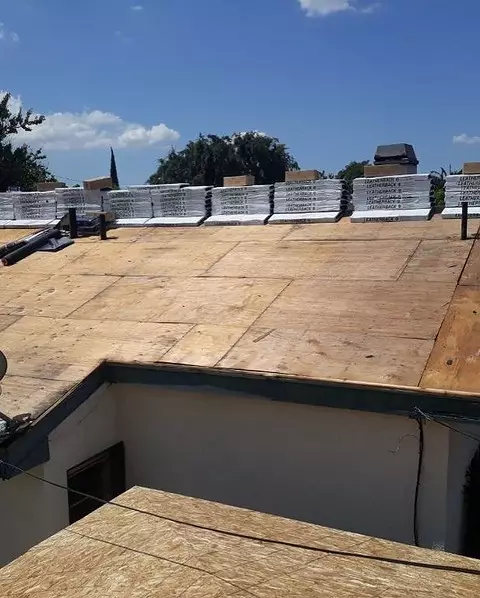
If it is believed that the rafter system will not withstand the alleged loads, it is strengthened. After that, go to the installation of the crate. It is collected from edged dry boards, the thickness of which is not less than 30 mm.
Thin lamellas will cost less, but this savings can wrap in the destruction of the structure. Send boards need tightly to each other, without gaps. Some brigades of the masters prefer to lay the lamella with a small distance. But even if the gaps are small, the base on such sites is vulnerable for damage and flow.
The coating is applied to repair. In this case, the foundation is cleaned, the dust and small garbage are cleaned, carefully examine. Significant defects, cracks, chips need to be chopped. The surface should be even so that the new roof does not appear dents, where water will be accumulated, or holes over old cracks.
Bitumen mastic applies strips. You can choose between a cold and hot version. The first is more convenient because the paste does not have to warm up immediately before applying. But it will cost more, it will have to be bought in the finished form. Hot can be prepared yourself. Here is one of the possible recipes:
- 8 kg of bitumen is laid in the metal capacity of sufficient volume.
- The fire is divorced under the container, the mass melts and heats up before the appearance of foam.
- 1.5 kg of filler (peat crumb, chalk, mineral wool, etc.), everything is well mixed.
- Carefully poured 0.5 l of any exhaust oil, mixed well.
The mixture is ready to work. You need to immediately begin to impose it. The higher the temperature, the solution is plastic.
Cold pasta is elastic at any temperature. Therefore, it is preferable if you need to repair a plot of a complex shape or cover the non-standard roof.
Laying
Regardless of the type of mastic, the installation of roofing canvase is carried out equally:
- From the edge of the skate, we cleaned the strip. Its size in width is equal to the width of the roll. All small garbage is removed.
- The prepared area is abundantly lubricating bituminous paste.
- We put the roll to the edge of the skate, starting to roll it up to the skate. Do not forget to leave the back over the scene, to fix it with the bar or glue. Pre-cut plate is not required.
- Cress the material with a special roller. Rolling the tool evenly throughout the lane. So the air bubbles from under the panel are removed, it is tightly glued to the base. For a better result, the roller goes twice.
- We calculate the next site. Together with this, clean the edge of the glued formation. Remove the crumb to the distance of the allen, that is, by 15-20 cm.
- We apply a mastic paste, roll off the lane with the allen. Twice ride a rink, it will be right.
- We continue the installation until the whole roof is covered.
Self-adhesive panels are analogue of traditional, only with a bituminous mastic already applied to the opposite side. Their installation is slightly different. The paste is not necessary for the basis.
It will be necessary to warm up the adhesive layer. This is done by White spirit or gas burner. The flame is heading for a mastic paste and melts it. The cloth rolled into the roller.
In some cases, additional fastening with wooden slats is performed. We figured out how to cover the roof of the garage, at home or any other building with their own hands. In conclusion, we propose to watch a video in which the entire laying process is shown in detail.



